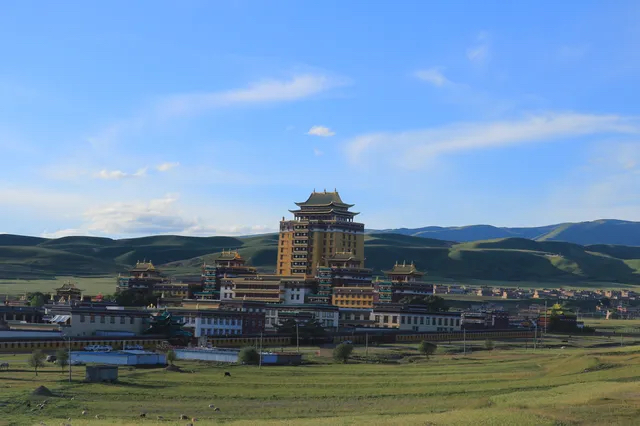
Ngawa Tashi Gomang monastery, a branch of Labrang Monastery, is Geluk monastery in Amdo that was founded in either 1776 or 1791 by the Second Jamyang Zhepa, Konchok Jigme Wangpo. As of 1996, it housed over 600 monks, of which eleven were incarnate lamas. Beginning in 1769, at the age of forty-two, Konchok Jigme Wangpo spent about two years in Mongolia and China. Much of his travels were dedicated to developing patronage relationships by giving empowerment and other ceremonies. During the period he visited Wutai Shan in Shanxi that is considered as the earthly abode of Manjusri in China to get teachings on tantra from the Third Changkya Rolpai Dorje. Over the course of his cultivation of Mongolian and Manchu powers he was given the titles Jasagh, meaning Administrative Officer, and Nominhan, meaning Dharmaraja. In 1776 these relationships bore considerable fruit; after giving an initiation at Urga he received the territory of Khotse in return. That same year he was given Ngawa, in southern Amdo, for the support of Labrang, and he established what would become an important Geluk monastery there, Ngawa Gomang. Some sources have it that the monastery was established in the final year of his life, 1791. He returned to Labrang in 1772. Upon his return he introduced the religious dance of wrathful deities following the tradition of Tashilhunpo, and also gave teachings on both sutra and tantra such as Lamrim and commentarial lectures on tantric texts. In 1951, Ven. Yeshi Gyatso (the former Labrang Monastery’s Kalachakara College abbot) established the Kalachakara Institute. Gomang monastery developed into a great university with Sutric, Kalachakara and Tantric studies. Gomang monastery has been directly under Labrang monastry’s care since 1791. Since this time Labrang monastery has sent a representative who was in charge of spritual and politices activities. In 1958, the villagers from upper middle Ngawa were moved into the monastery’s site and the monastery was turned into a vegetable garden until the 1980s. In 1981, Gomang Monastery got a permission reopening the monastery and the library hall was only in the monastery at that time. Library hall was also too small and first monks assembled in a big tent. In 1982, Monastery rebuilt the small scriptural hall with 56 pillars. That year, the monks were also allowed to build 60 residences and the following year one hundred more were allowed. Ven. Harwa Jamyang Lodu Ringpoche and other leaders have taken responsibility for re developing monastic structure, academic rules, and Tantra and Sutric schools’ curriculum of studies as well as rebuilding the assembly halls, temples, and the stupas. The schools, hospitals and temple of prayer wheels were gradually rebuilt due to Harwa Ringpoche’s hard work and the support of his disciples around world and local devotees. Gomang monastery’s process of spiritual development has gradually improved over the years and many monks are presently reaching a Buddhist academic stage of learning and practice.
 Tibet World Travel Tibet Tour, Tibet Trip, Tibet Travel, Tibet Train, Tibet Trekking,
Tibet World Travel Tibet Tour, Tibet Trip, Tibet Travel, Tibet Train, Tibet Trekking,
